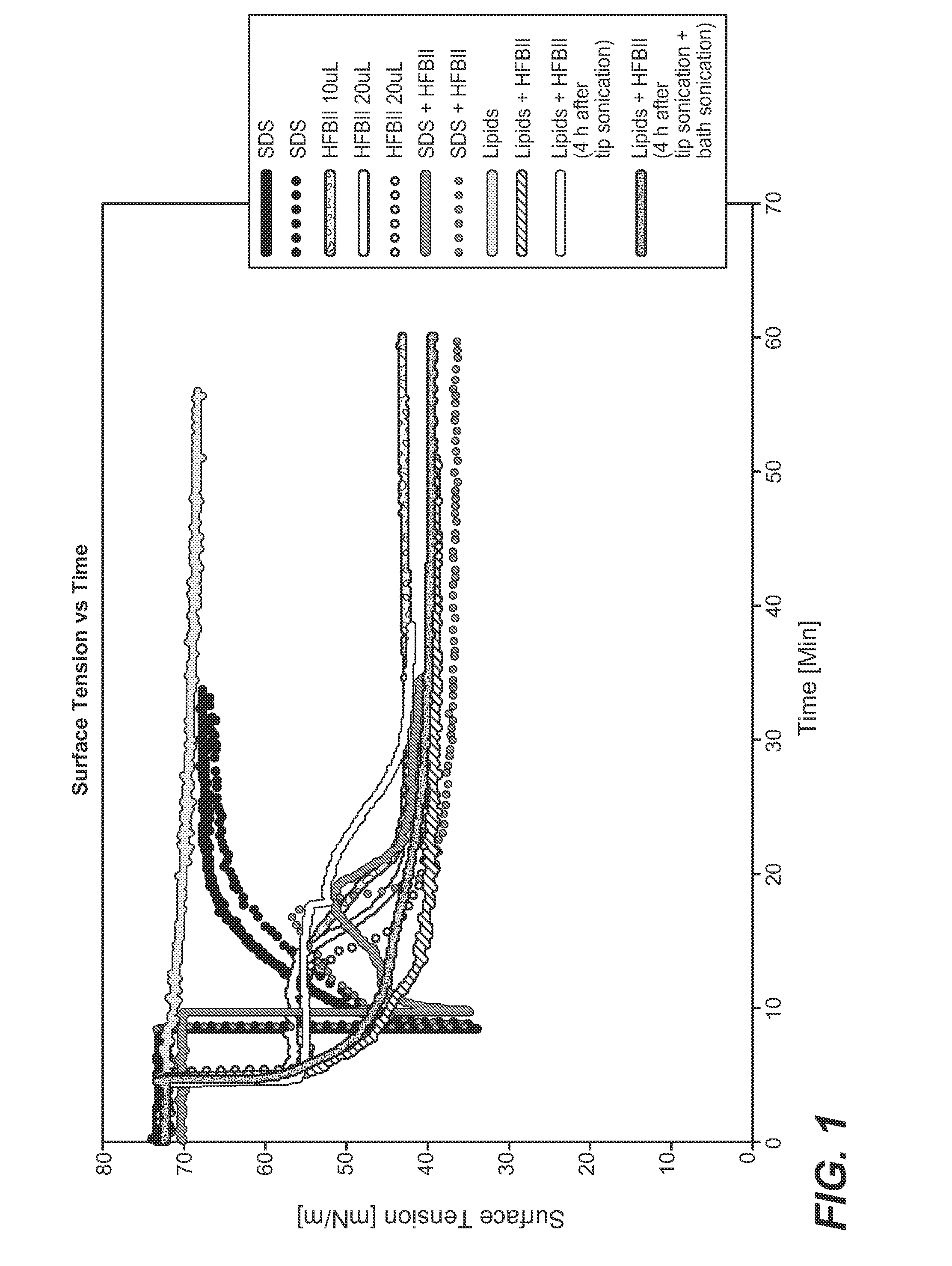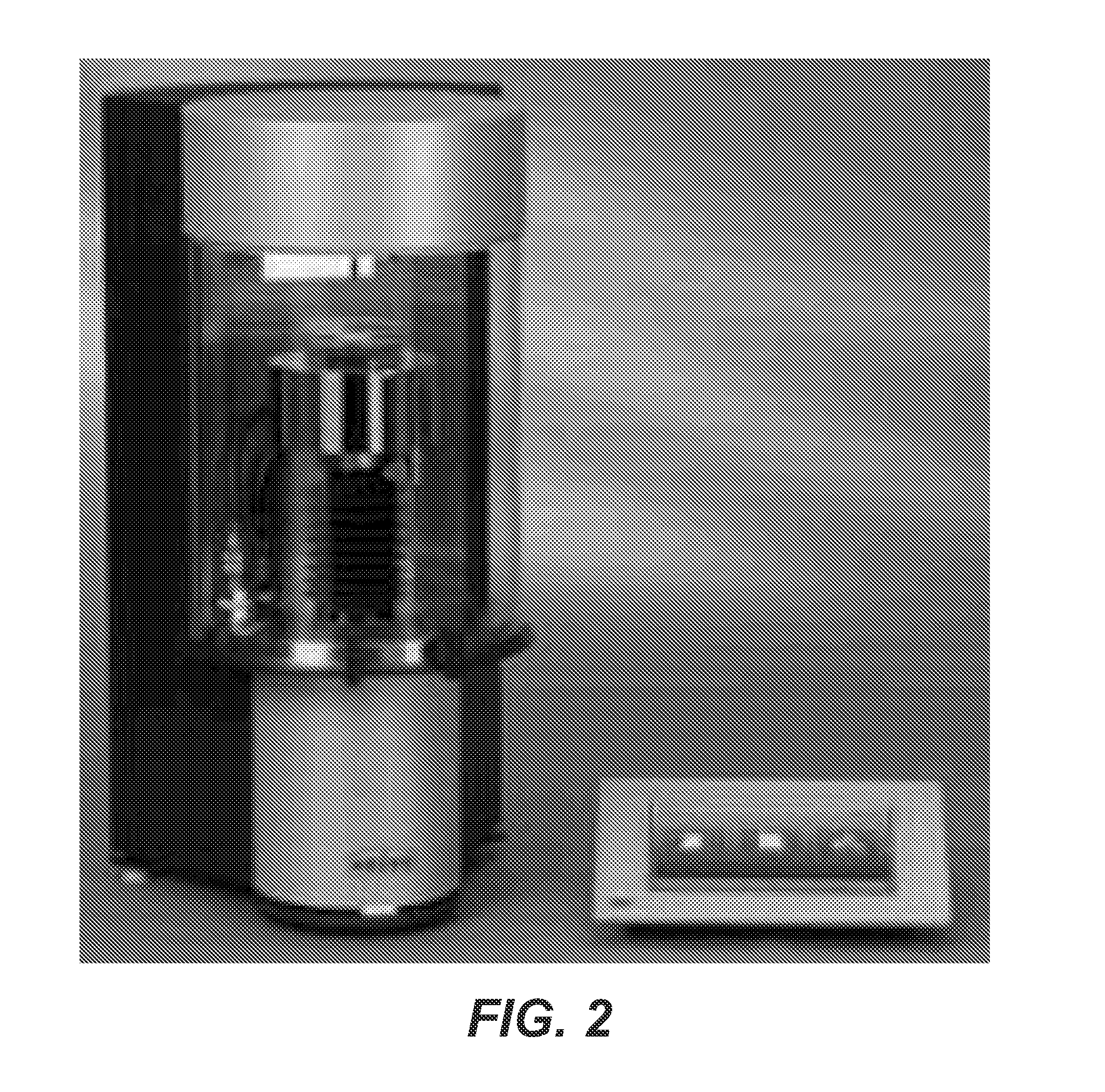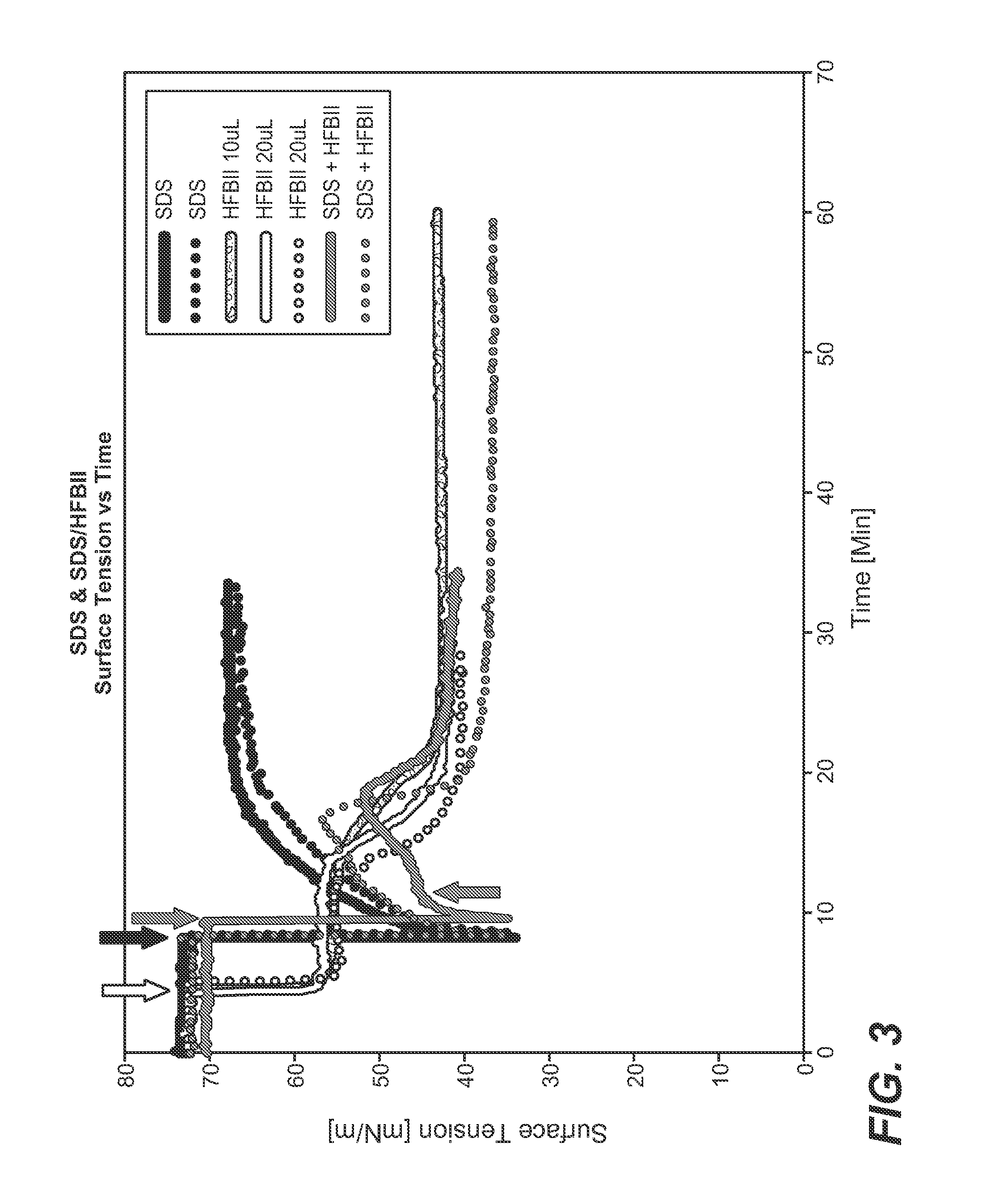Stabilization of biomimetic membranes
- Summary
- Abstract
- Description
- Claims
- Application Information
AI Technical Summary
Benefits of technology
Problems solved by technology
Method used
Image
Examples
example 1
Materials and Methods
[0465]Sodium dodecyl sulfate (SDS), 1,2-Dioleoyl-sn-glycero-3-phosphoethanolamine (DOPE), L-α-Phosphatidylcholine (SoyPC), Tris-Base buffer (Sigma-Aldrich), and Hydrophobin (HFBII)
[0466]Micelles Formation:
[0467]SDS micelles were formed in 5 mM Tris buffer, 150 mM NaCl pH 7. An appropriate amount of SDS was dissolved in the buffer for getting a final concentration of 0.035M. The samples were shaken in a Vortex for 1 min. to ensure a final homogeneous solution.
[0468]Micelles-Protein Samples:
[0469]SDS micelles-HFBII mixtures were formed in 5 mM Tris buffer, 150 mM NaCl, pH 7, at a protein-detergent molar ratio of 1:07 (molar ratio) The optimal HFBII:SDS ratio was selected according to the data published by Zhang et al. (Zhang et al. 2011 Adsorption Behavior of Hydrophobin and Hydrophobin / Suifactant Mixtures at the Solid-Solution Inteiface. Langmuir 27:10464-74; Zhang et al. 2011. Self-Assembly of Hydrophobin and Hydrophobin / Suifactant Mixtures in Aqueous Solution. ...
example 2
AqpZ-HFBII Mixtures
[0485]Materials:
[0486]AqpZ: 20 mg / mL stock solution containing 20 mM Tris, 300 mM NaCl, 300 mM Imidazole, 10% glycerol, 0.3% Surfactant, pH 8.0
[0487]HFBII: 8.5% stock solution containing 0.13% potassium sorbate, pH 3.5
[0488]Procedure:
[0489]4 solutions containing AqpZ and HFBII mixtures were prepared with different AqpZ and HFBII concentrations in 10 mM PBS buffer (pH=7.6) (Samples 1-4). The samples were dialyzed (cutoff=1 kDa) against 10 mM PBS buffer for 72 hours.
[0490]The surfactant was removed via dialysis which exposes the hydrophibc surfaces of AqpZ to be accessed by HFBII.
[0491]For comparison, 4 solutions containing only AqpZ or HFBII were also prepared (Control 1-4) and subject to the same dialysis process.
AqpZHFB1000 ppm100 ppm0 ppm1000 ppm Sample 1Sample 2Control 3100 ppmSample 3Sample 4Control 4 0 ppmControl 1Control 2
[0492]Characterization:
[0493]The mixtures were examined with dynamic light scattering (DLS) using a Melvern nano Zetasizer (Malvern Instru...
example 3
Surface Modification of Block Copolymer Membranes by HFBII
[0501]Materials: PMOXA15-PDMS67-PMOXA15 was acquired from Sigma-Aldrich. HFBII: 8.5% stock solution containing 0.13% potassium sorbate, pH 3.5.
[0502]Procedure:
[0503]PMOXA15-PDMS67-PMOXA15 was dissolved in chloroform with rigorous agitation and left still at room temperature to reach homogeneity. Block copolymer membranes were prepared by casting ˜0.2 mL chloroform solution onto triple DI water washed glass slide (1 in.×3 in.) and dried in air for 72 hrs. The resulting membrane was further dried in a vacuum oven at 0.3 mbar at room temperature for 60 min to remove remaining chloroform. For HFB surface modification, the glass slide with polymer membrane was soaked in 1000 ppm HFB solution for 30 min, followed by washing with DI water and dried in vacuum oven at 0.3 mbar for another 60 min. For comparison, another piece of the same membrane sample was soaked in water for the same duration and subject to the same drying procedure...
PUM
| Property | Measurement | Unit |
|---|---|---|
| Fraction | aaaaa | aaaaa |
| Fraction | aaaaa | aaaaa |
| Fraction | aaaaa | aaaaa |
Abstract
Description
Claims
Application Information
 Login to View More
Login to View More - R&D
- Intellectual Property
- Life Sciences
- Materials
- Tech Scout
- Unparalleled Data Quality
- Higher Quality Content
- 60% Fewer Hallucinations
Browse by: Latest US Patents, China's latest patents, Technical Efficacy Thesaurus, Application Domain, Technology Topic, Popular Technical Reports.
© 2025 PatSnap. All rights reserved.Legal|Privacy policy|Modern Slavery Act Transparency Statement|Sitemap|About US| Contact US: help@patsnap.com



